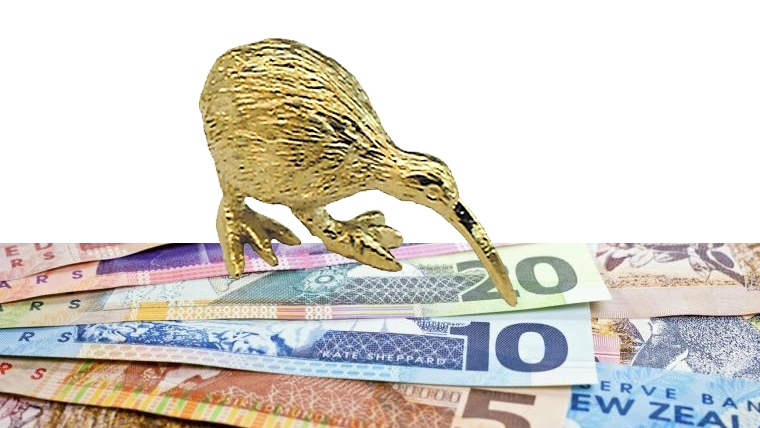
There has been no economic news, but plenty of political news to keep the market on edge, including significant moves in Japan’s equities, bonds and currency following the shock selection of the new LDP leader. Overnight, France was inflicted with more political turmoil. The US government remains in shutdown mode. NZ is a beacon of stability by comparison, with the NZD trading at its high for the day around 0.5840, and gains on most crosses, including a 2% surge in NZD/JPY.
As Asian markets opened there was focus on Japanese stocks and bonds and the yen, following the shock selection on Saturday of Takaichi as the new LDP leader, and who is set to become the first female PM, subject to a parliamentary vote later this month. Being a known supporter of both monetary and fiscal policy stimulus, her selection was expected to result in stronger Japanese equities, a steeper yield curve with lower short-end JGB yields and higher longer term JGB yields, and a weaker yen.
In the event, that price action occurred on all accounts. The Nikkei index surged 4.8% to a record high, while the market pared the prospect of tighter monetary policy, leading to a 4bps fall in the 2-year rate and a 14bps surge in the 30-year rate. The market now only prices 6bps of hikes for the late-October BoJ meeting, down from 14bps on Friday and a slightly more than 50/50 chance of a 25bps hike at the December meeting. USD/JPY is currently up 1.9% from last week’s close to 150.20, after meeting some resistance just under 150.50. NZD/JPY is currently up 2% to 87.7, slightly extending the gain seen during NZ trading hours.
The other notable political event was French PM Lecornu unexpectedly resigning after less than a month in the role, following President Macron’s naming of a new cabinet. Lecornu said opposition parties weren’t willing to compromise enough, making his job impossible. President Macron gave Lecornu 48 hours to try a last-ditch effort to negotiate with other political parties to inject some stability in the government. If that doesn’t work, Macron can appoint another PM or call an early parliamentary election. Whatever the outcome, the next PM faces an impossible task of putting together an agreeable French budget.
Another bout of French political uncertainty against the backdrop of concerns about the size of the country’s budget deficit drove further underperformance of French equities, with the CAC-40 index falling 1.4%. France’s 10-year bond rate rose 6bps, against a 2bps lift in Germany’s rate, seeing the spread widen to 85bps, its highest since January. EUR fell 60pips to just over 1.1650 before fully recovering. This sent NZD/EUR to an overnight high just under 0.50, and the cross rate is currently up 0.4% from last week’s close at 0.4985.
The NZD and AUD are both slightly higher from last week’s close. The NZD has sustained the gain made during local trading hours and currently sits near its high for the session around 0.5840. The AUD is at 0.6620 and NZD/AUD is little changed at 0.8825.
Higher long-term Japanese yields spilled over into US Treasuries. There was some mild upward pressure in the US 10-year rate during NZ trading hours, and the move has extended overnight. The 10-year rate currently 4.16%, up 2bps from the NZ close and up 4bps from Friday’s close, with the curve steeper.
In other news, Advanced Micro Devices made a multi-billion-dollar deal with OpenAI to collaborate on AI data centres that will run on AMD processors. OpenAI will receive warrants that allow it to buy up to 10% of AMD for a penny a share. This follows a recent deal between Nvidia and OpenAI. The market liked the deal, and the S&P500 index is up 0.4%, led by IT stocks. However, deals like this are fuelling concern about a developing AI bubble, with “circular” financing deals concentrated within a few key players. The WSJ recently noted that over the past three years, leading tech firms have committed more toward AI data centres, chips and energy, than it cost to build the interstate highway system over four decades, when adjusted for inflation.
Oil prices are up 1½%, with the market reacting positively to the more modest 137,000 barrels-per-day lift in production agreed at the weekend OPEC+ meeting. Brent crude currently trades around USD65.50 per barrel. Gold prices continue their record-breaking run, with the spot price reaching as high as USD3970 per troy ounce.
With most of Australia on holiday, it was a quiet domestic rates trading session yesterday. Upward pressure from global forces spilled over into the NZGB market. The 10-year rate rose 2bps to 4.23%, while rates were up 3bps for longer maturities. NZ swap rates rose 1-2bps.
In the day ahead the domestic focus will be on the Quarterly Survey of Business Opinion, the last data point that could possibly tilt the RBNZ’s decision on policy tomorrow. The release will offer extensive data on activity indicators, expectations, and pricing trends. Based on last week’s ANZ survey, some improvement in activity indicators is anticipated. Elsewhere, there are only second-tier data releases.
Daily exchange rates
Select chart tabs
Jason Wong is the Senior Markets Strategist at BNZ Markets.

We welcome your comments below. If you are not already registered, please register to comment.
Remember we welcome robust, respectful and insightful debate. We don't welcome abusive or defamatory comments and will de-register those repeatedly making such comments. Our current comment policy is here.